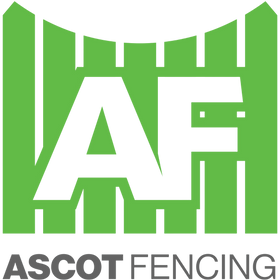When building or replacing a garden fence, choosing the right materials for fence posts and gravel boards is crucial. These elements are not just functional; they impact the durability, appearance, and cost of your fencing.
Whether you’re working on a modern or natural-style garden, the choice between concrete and timber can make all the difference.
In this blog, we’ll explore the pros and cons of both concrete and timber fence posts and gravel boards, helping you make an informed decision for your garden.
Why Fence Posts and Gravel Boards Matter for a Strong Garden Fence
Fence posts and gravel boards are the unsung heroes of a good, sturdy fence. Posts provide the structural support to keep fencing upright and secure, while gravel boards sit at the base of the panels, protecting them from ground-level moisture and damage.
Both are essential to ensuring the longevity of your fencing and play a vital role in keeping your outdoor spaces looking great.
However, the materials you choose for these components - concrete or timber - can significantly affect performance, appearance, and upkeep.

Concrete Fence Posts and Gravel Boards
Concrete fence posts and gravel boards are valued for their strength and reliability, often suiting gardens with a modern, structured aesthetic.
They’re ideal for creating clean lines and achieving a low-maintenance fencing arrangement.
Advantages
· Durability and longevity: Concrete is highly resistant to wear, weather, and environmental factors, outlasting timber in most conditions.
· Less susceptible to rot and pests: Concrete won’t decay or be damaged by insects, making it an excellent choice for damp or pest-prone environments.
· Low maintenance requirements: Once installed, concrete posts and gravel boards require little to no upkeep, saving you time and money in the long run.
· Cost consideration: While the initial cost of concrete materials can be higher, their longevity and minimal maintenance often offset this.
Disadvantages
· Heavier installation: Concrete is significantly heavier than timber, making installation more challenging without the right tools or expertise.
· Higher initial costs: Investing in concrete posts and gravel boards tends to be more expensive upfront, although they’re often more cost-effective over time.
· Less flexibility post-installation: Unlike timber, concrete cannot be easily adjusted once installed, meaning any design changes may require extensive work.
Timber Fence Posts and Gravel Boards
Timber offers a classic, natural look that complements traditional or rustic-style gardens beautifully.
With their organic texture and charm, they blend seamlessly into a lush, green environment.
Advantages
· Aesthetically pleasing: Timber has a timeless, natural appearance that works with a wide range of garden designs.
· Easier to handle and install: Timber is lightweight and simple to work with, making it a popular choice for DIY projects.
· More cost-effective initially: Timber posts and gravel boards are affordable and often fit within tighter budgets, especially for smaller fencing projects.
Disadvantages
· Vulnerable to decay: Timber can rot over time due to moisture exposure and is prone to damage from pests like wood-boring insects.
· Requires regular maintenance: To preserve timber’s appearance and structural integrity, it needs regular painting or treating - a time-consuming and sometimes costly process.
· Cost consideration: While cheaper up front, the ongoing maintenance costs of timber can add up over time.
 |
 |
How to Make the Right Choice for Your Needs
Deciding between concrete and timber fence posts and gravel boards can feel tricky, but the right choice comes down to your specific needs and circumstances.
Factors such as climate, soil type, purpose, and desired level of maintenance all play a crucial role in finding the perfect match for your garden.
Here are a few factors to consider:
· Climate: For wetter climates, concrete is better suited because it resists rot and moisture damage.
· Soil type: Concrete is ideal in areas with loose or shifting soil where extra durability is needed.
· Purpose: For decorative purposes, timber’s natural aesthetic often fits better, while concrete works best for security fencing or long-term solutions.
· Maintenance: If you prefer low-maintenance solutions, concrete is your best bet. Timber, on the other hand, is ideal for those who enjoy customising and maintaining their fences.
Choosing the right material takes careful thought, but you don’t have to decide alone. At Ascot Fencing, we’re here to help you weigh the pros and cons based on your garden’s unique requirements.
Whether you’re after a durable, low-maintenance solution or something with timeless appeal, our team can provide tailored advice to guide you to the perfect decision.

So, Concrete or Timber? Here's What We Recommend
At Ascot Fencing, we understand the appeal of both concrete and timber. Both materials have their strengths, and the "better" choice depends on your needs and preferences.
That said, we tend to lean towards concrete for its long-term durability, low maintenance, and cost-effectiveness over time.
While it may not offer the same natural charm as timber, its practicality and resilience make it a dependable option for a wide variety of gardens.
We still see the value in timber for gardens that demand a more organic, traditional look, and we never discount its aesthetic qualities or straightforward installation process. Whatever your vision, we’re here to help you choose the perfect solution.
Ready to build your dream fence? Browse our full range of gravel boards and fence posts online.
Still need help deciding which material is best? Get in touch now for expert help and advice.







